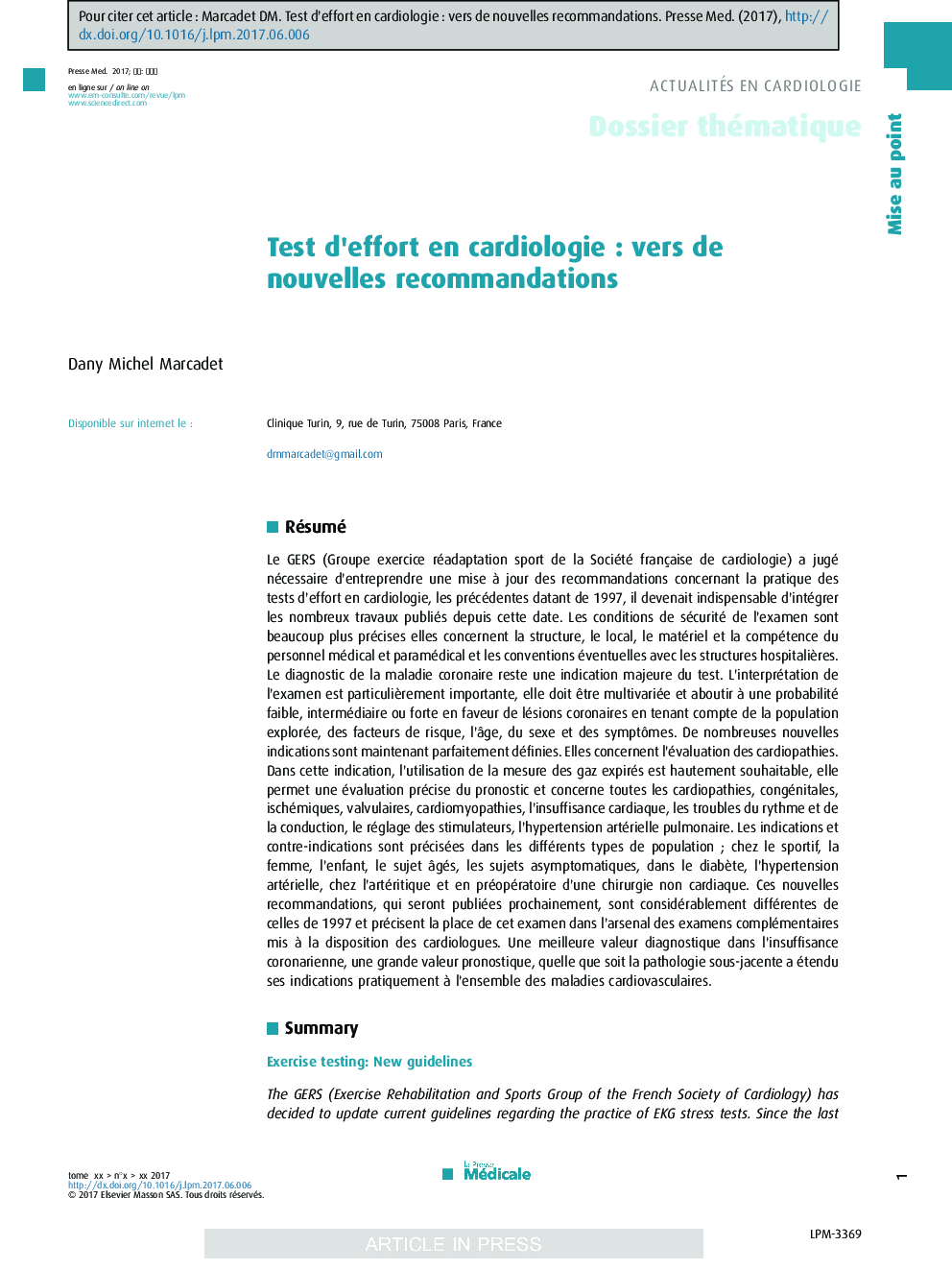| Article ID | Journal | Published Year | Pages | File Type |
|---|---|---|---|---|
| 5682741 | La Presse Médicale | 2017 | 6 Pages |
Abstract
The GERS (Exercise Rehabilitation and Sports Group of the French Society of Cardiology) has decided to update current guidelines regarding the practice of EKG stress tests. Since the last update dates from 1997, the GERS judged it necessary to integrate data from new works and advancements made in the last 20 years. Good clinical practices and safety conditions are better defined regarding the structure, location, material, staff competency, as well as convention with hospital structures. The diagnosis of coronary artery disease remains the principal indication for a stress test. Interpretation of the results is crucial-it must be multivariate and provide either a low, intermediate or strong probability of the existence of coronary lesions, taking into account the studied population (risk factors, age, sex and symptoms). Several new indications for a stress test have been defined for the assessment of cardiac pathologies. With such indications, the use of gas expiration measurements is highly recommended in order to provide a precise prognosis for all the various cardiac pathologies : congenital, ischemic, valvular, cardiomyopathies, congestive heart failure, rhythm and conduction disorders, pacemaker fine-tuning, or pulmonary hypertension. Indications for stress tests and contraindications are defined according to different population subgroups, for instance : athletes, women, children, the elderly, asymptomatic patients, diabetics, hypertensive patients, PAD patients, or in the context of a non-cardiac surgery pre-op visit. The new guidelines (due for publication soon) are considerably different from those dating from 1997 and further pinpoint the relevance and importance of an EKG stress test within the arsenal of complementary cardiologic exams. With the improvements made in providing diagnostic value in CAD, as well as better prognostic value for any underlying pathology, the indication for an EKG stress test has extended to all cardiovascular disease.
Related Topics
Health Sciences
Medicine and Dentistry
Medicine and Dentistry (General)
Authors
Dany Michel Marcadet,
